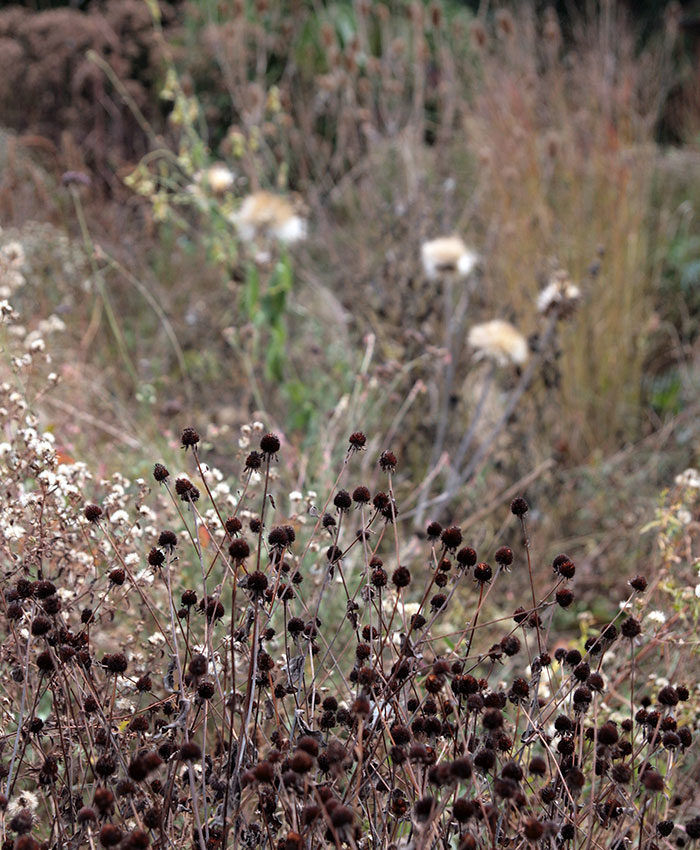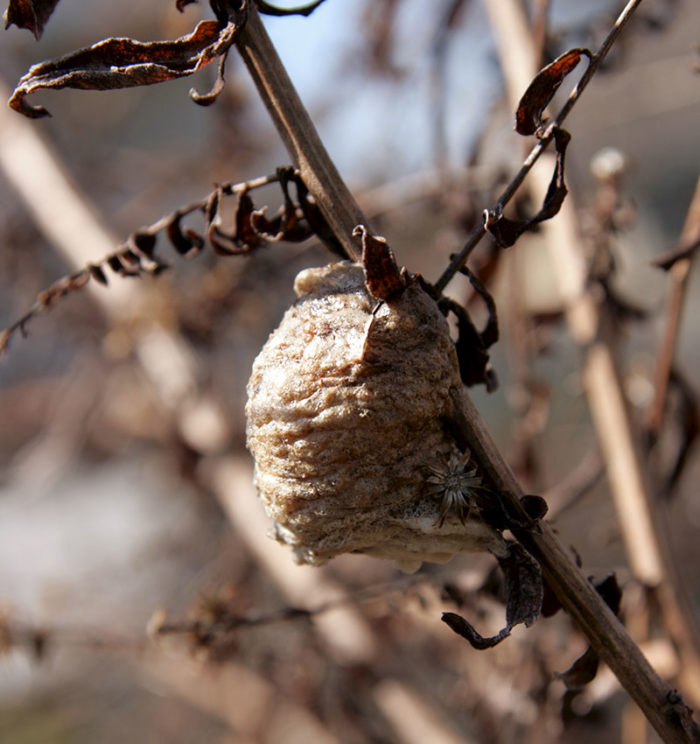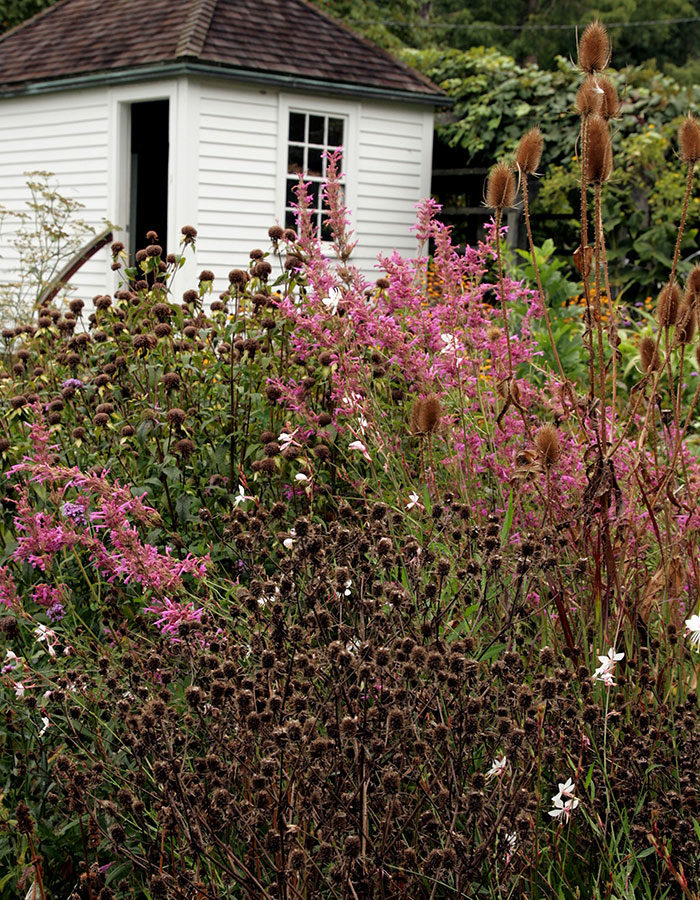
Most of us were taught to get a jump on spring by putting the garden “to bed” in the fall. We’re compelled to cut every perennial down to the ground, yank annuals out by their roots, and rake leaves off beds and lawns. It turns out that for many of us tidiness is overrated, and most of the preseason prep can—and should—wait until spring.

Traditional methods are changing because our priorities have changed: aesthetics are tied to a higher purpose. Gardens, as carefully designed, maintained, and floriferous as they may be, are also living ecosystems, providing habitat and sustenance to all manner of wildlife. Many gardeners have become naturalists and stewards, more likely to measure success by the number of species of pollinators buzzing around their combinations than by how great those plants look together.

To fully accommodate nature’s workforce, we need to take animal life cycles into account. Many insects, bees, butterflies, moths, and spiders overwinter as adults, eggs, or cocooned pupae. Some need the insulating shelter of leaf litter; others attach to stems and twigs. Birds too will use the plants in our gardens as feeding stations, roosting sites, and as cover from predators. So we should redirect the desire for tidiness into designs that incorporate the utility, as well as the beauty, of stems and seed heads left standing to catch the frost and stick out of the snow.

Allow sculptural seed heads to form on purple coneflower (Echinacea purpurea cvs., Zones 3–8), brown-eyed Susans (Rudbeckia triloba, Zones 4–8), Japanese anemone (Anemone tomentosa cvs., Zones 4–7), and sea holly (Eryngium planum, Zones 5–9). Some will feed the birds, some will self-sow, and all will provide winter interest.

Given the insulating protection of their own stems, along with a thick layer of mulch, some tender “annuals” such as hummingbird sage (Salvia guaranitica, Zones 7–10) and pineapple sage (S. elegans, Zones 7–11) may survive winter in the ground. If they don’t come back, their roots will have started breaking down, adding organic matter to the soil.

Leave the leaves. Add shredded leaves to garden beds to act as shelter for hibernating insects and as insulating mulch around the crowns of perennials. Leaves may also be mowed onto the lawn to break down and improve the soil.
Of course, not all wildlife is welcome, and not all plants are winter-worthy. Voles, which feast on woody plants, perennials, and grasses at ground level, are somewhat discouraged by the exposure of old-school tidiness. If you’ve noticed munching, clear leaves and mulch away from favorite plants. Also, you should cut down perennials and annuals that have been damaged by fungal infections. And always clean debris out from under diseased roses to prevent the spread of blackspot.
Experiment. Let some of the garden stay up this winter instead of putting it to bed, and see for yourself how much beauty there is in the protection and sustenance it provides.

—Kristin Green is the author of Plantiful: Start Small, Grow Big With 150 Plants That Spread, Self-sow, and Overwinter. She gardens in Bristol, Rhode Island.
Fine Gardening Recommended Products

Fiskars 15" PowerGear Loppers—Sharp Steel Blade Bush and Tree Trimmer
Fine Gardening receives a commission for items purchased through links on this site, including Amazon Associates and other affiliate advertising programs.

Corona® Multi-Purpose Metal Mini Garden Shovel
Fine Gardening receives a commission for items purchased through links on this site, including Amazon Associates and other affiliate advertising programs.

Gardener's Log Book from NYBG
Fine Gardening receives a commission for items purchased through links on this site, including Amazon Associates and other affiliate advertising programs.



















Comments
thank you for supporting a more natural approach. I always find praying mantis egg cases. I watch the goldfinches eat the seeds from my echinacea, spiders in the leaf litter and a variety of life in and around my yard. I think people need permission to think about doing things differently after passively listening to the circle of fertilizers, pesticides and cleaning.
I love seeing gardens in the winter as well as in the other seasons. Thank you.
Log in or create an account to post a comment.
Sign up Log in